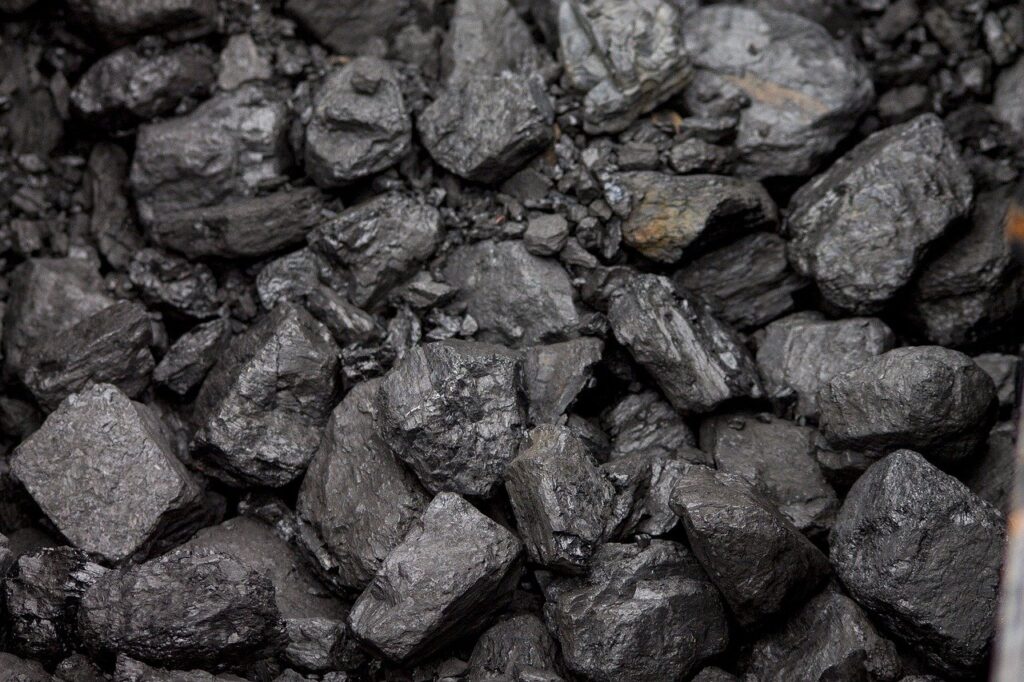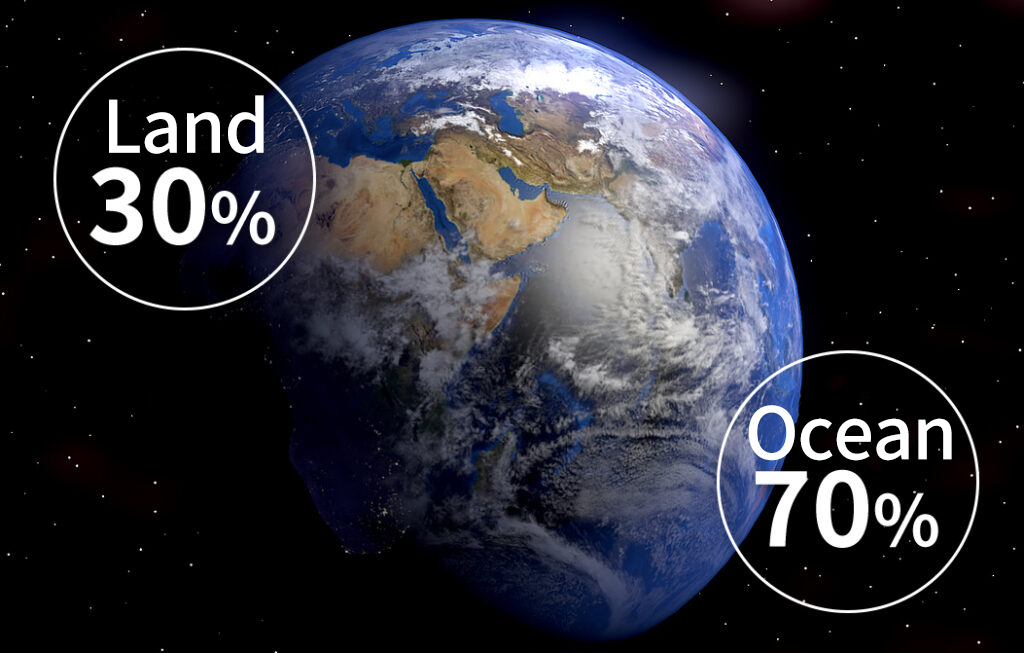Introduction
- Only 30% of the Sun’s rays are currently harnessed on land to create electricity, such as through wind and solar power generation. The remaining 70% of the Sun’s rays are absorbed by the oceans and converted into currents.
- K-Green Energy harnesses the continuous power of ocean currents, ensuring a reliable and renewable energy source available throughout the year. The ‘K’ in K-Green Energy represents “Kairyu (ocean current),” giving it its name.
Allow us to explain why the need for renewable ocean current energy is more crucial than ever.
Necessity of Renewable Ocean Energy
Coal: The Primary Energy Source of the 19th Century――Solar Energy that Accumulated Over Millions of Years
During the 19th century, the Industrial Revolution was initiated through the utilization of coal, which served as the primary energy source. Coal is essentially solar energy that accumulated over hundreds of millions of years. To put it simply, coal originated from organic matter that had required water and CO2 for growth through photosynthesis. This organic matter accumulated over a vast period of time and transformed into coal. Undoubtedly, the 19th century was characterized by the dominance of coal, as we tapped into the vast reserves of solar energy.

Petroleum: The Primary Energy Source of the 20th Century
As we transitioned into the 20th century, a significant breakthrough occurred in the industry. Humanity began harnessing the power of petroleum, a new energy source, through the development of internal combustion engines that ran on petroleum. Similar to coal, petroleum is derived from organic matter that accumulated over millions of centuries.
As previously mentioned, the 20th century was defined by the dominance of petroleum, which can be equated with the solar energy.

Renewable Energy: Ocean Currents as a Key Energy Source in the 21st Century――Harnessing Solar Energy
However, humans’ excessive consumption of petroleum throughout the 19th and 20th centuries has led to the increased concentration of CO2 in the atmosphere and subsequent global warming. Therefore, in the 21st century, it is crucial to harness the power of ocean currents as an alternative to reduce our reliance on long-accumulated solar energy alone.
Approximately 70% of the total solar energy emitted towards the Earth is absorbed by the ocean, giving rise to ocean currents. With this in mind, we urge your support for K-Green Energy, the world’s first power generation system that strives to effectively harness the power of ocean currents.

Currently, only around 30% of the total solar energy emitted toward the Earth is effectively utilized, and its application are mostly limited to a few power generation methods, such as biomass, solar, wind, and hydro.
The mass of seawater is roughly a thousand times greater than that of air, providing a substantial resource for ocean current power generation. Additionally, ocean current power generation can utilize a larger land area compared to wind power generation. By fully capitalizing on the potential of ocean currents, it is possible to generate more than ten times the amount of power produced by wind power generation.
Roughly 70% of the Total Solar Energy on Earth is Untapped
As we have learned, current power generation methods harness only about 30% of the total solar energy directed towards the land. Unfortunately, the remaining 70% or so, which contributes to ocean current energy, goes unused. Solar energy generates the movement of seawater, resulting in ocean currents due to variations in temperature distribution across different areas.

Why hasn’t tidal energy been utilized until now?
Despite countless experiments over the past three decades, tidal energy generation has yet to achieve success due to conventional approaches.
Fluid dynamics is the academic realm that encompasses both wind and tidal energy. This is why renowned universities worldwide, teeming with experts in fluid dynamics, have espoused a single doctrine: “Tidal energy power generation should follow the same blueprint as wind energy power generation by installing columns and rotating propellers.” Enthralled by this notion, companies and researchers globally embarked on countless experiments, united by the shared assumption. And yet, the results were resoundingly lackluster, strewn with failures along the path of ambition. The underlying reasons are detailed below:
- At the core of fluid power lies an intriguing principle: the generated power is proportional to the cube of the fluid’s velocity. If water flowing at 1 meter per second accelerates to 2 meters per second, the energy output surges by a factor of 8. Conversely, a velocity reduction to 1/10 results in a minuscule 1/1000 of the energy output.
- Wind power generation can optimize its power production by installing propellers on towers that stand 20 to 50 meters high, strategically positioned on hills to harness the maximum available wind speed. In contrast, regions characterized by high flow speeds generally extend no deeper than 100 meters from the sea surface. Given that the ocean floor typically reaches depths of 1000 to 2000 meters, constructing ocean current turbines on the seabed is considerably less effective in generating electricity compared to wind power generation.
Acknowledging this challenge, the University of North Florida has conducted a twenty-year-long experiment. In this study, large screws were affixed to an aircraft wing connected to seabed anchors via wire cables. Now, a similar experiment is taking place at a depth of 200 meters in Japan by replacing screws with propellers, but making use of this power generation system is believed to be extremely challenging.
This is the primary factor behind this failure, which has been addressed with K-Green Energy.
K-Green Energy: the non-propelled power generation system at depths of 1000 to 2000 meters
K-Green Energy is a pioneering marine power generation system that capitalizes on the swiftest ocean current flow speeds occurring at depths ranging from 1000 to 2000 meters. This groundbreaking technology has garnered global patent recognition. By tapping into the immense energy potential of ocean currents at these depths, we can diminish our reliance on fossil fuels to zero.
We cordially invite your invaluable support and collaboration in the realization of K-Green Energy, the revolutionary power generation system. Join us in turning our shared vision into a tangible reality in the pursuit of mitigating global warming. Together, let’s transform the energy landscape for a greener future!